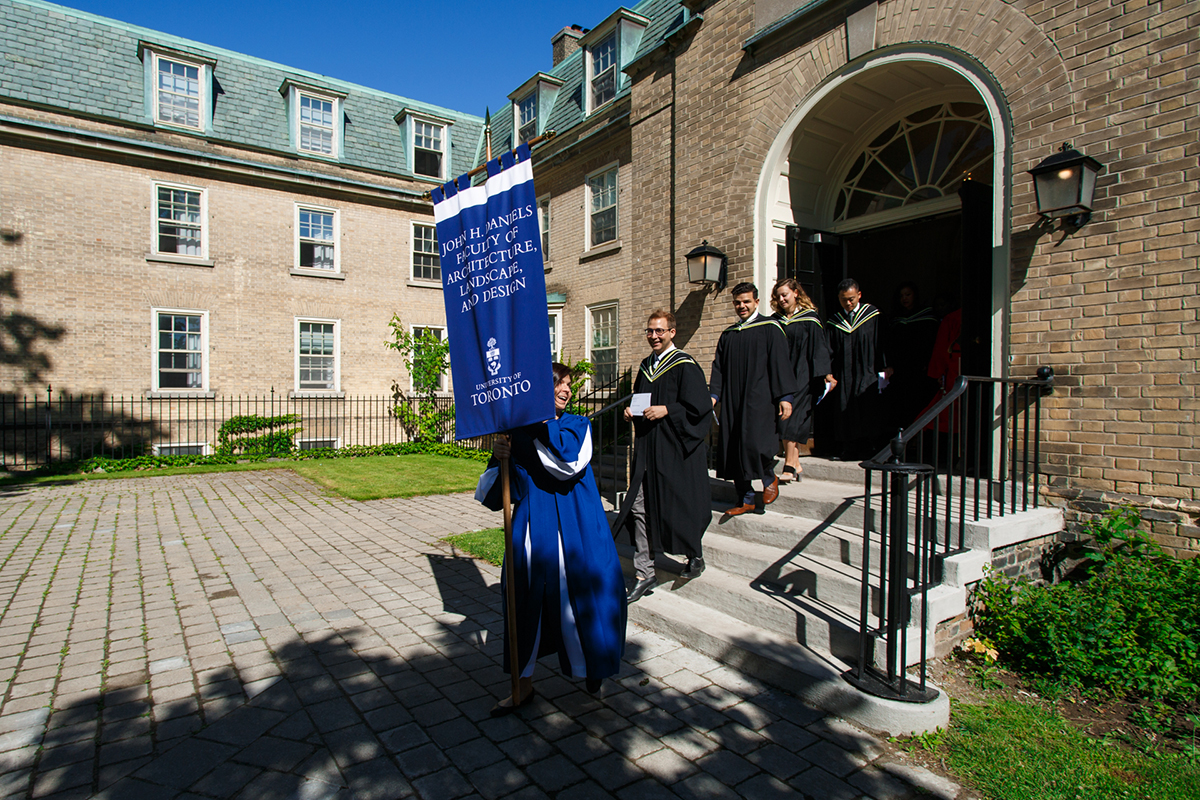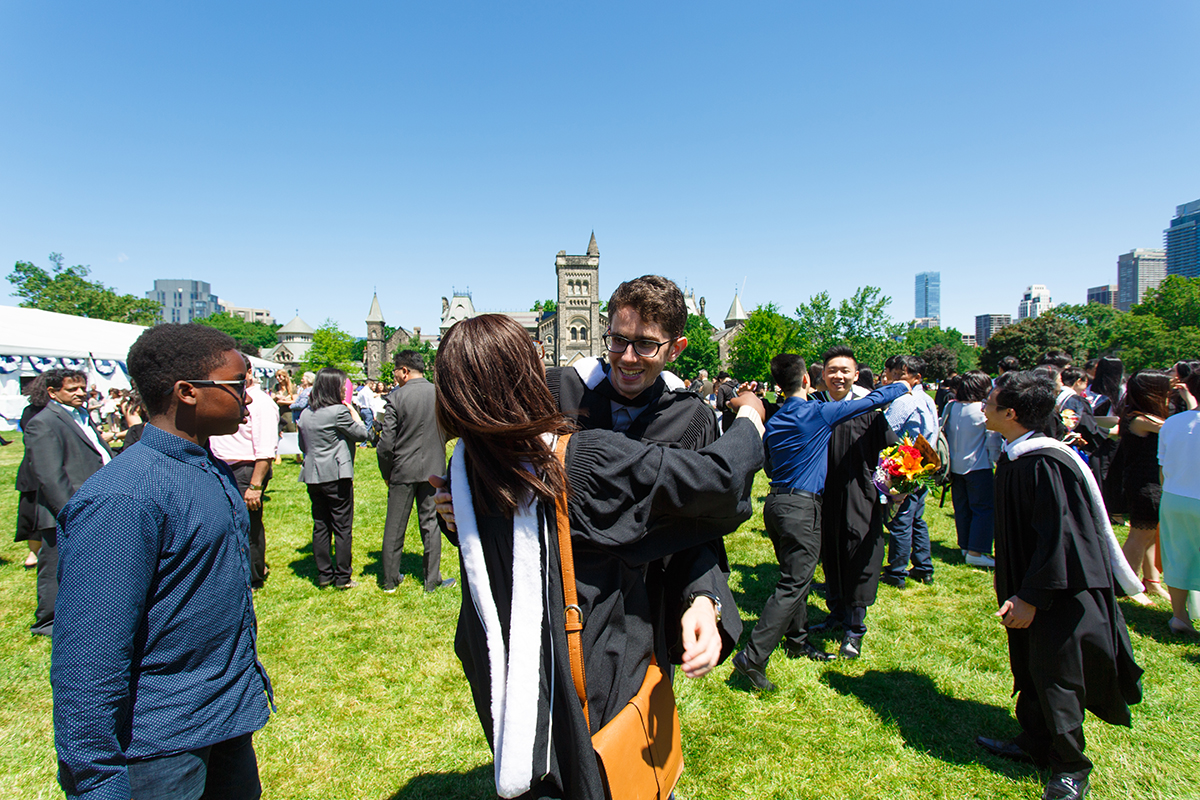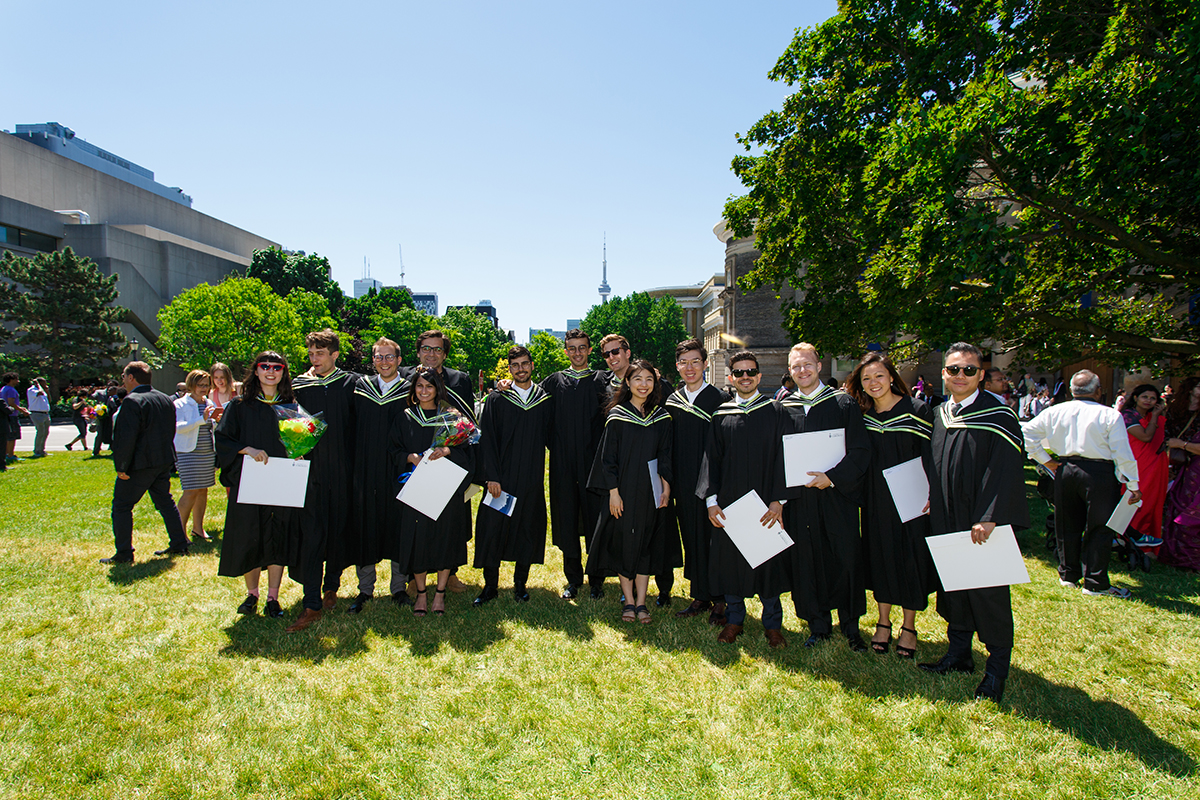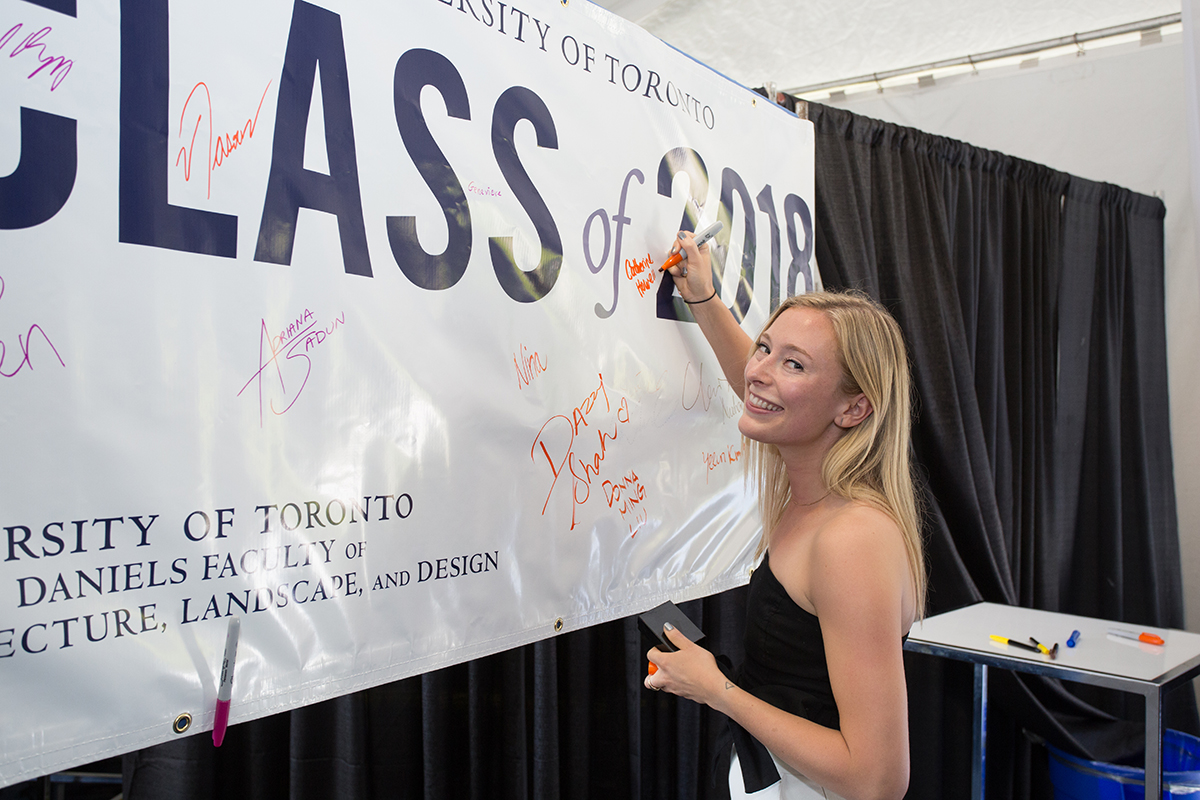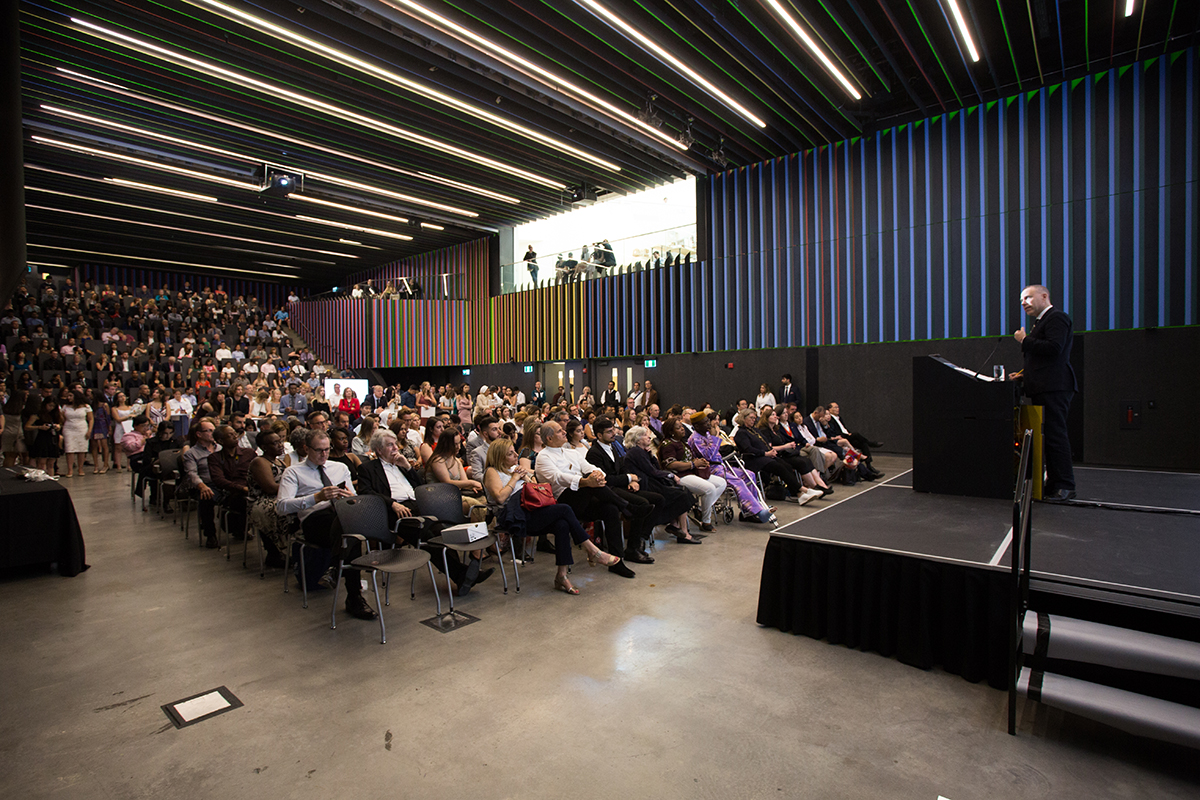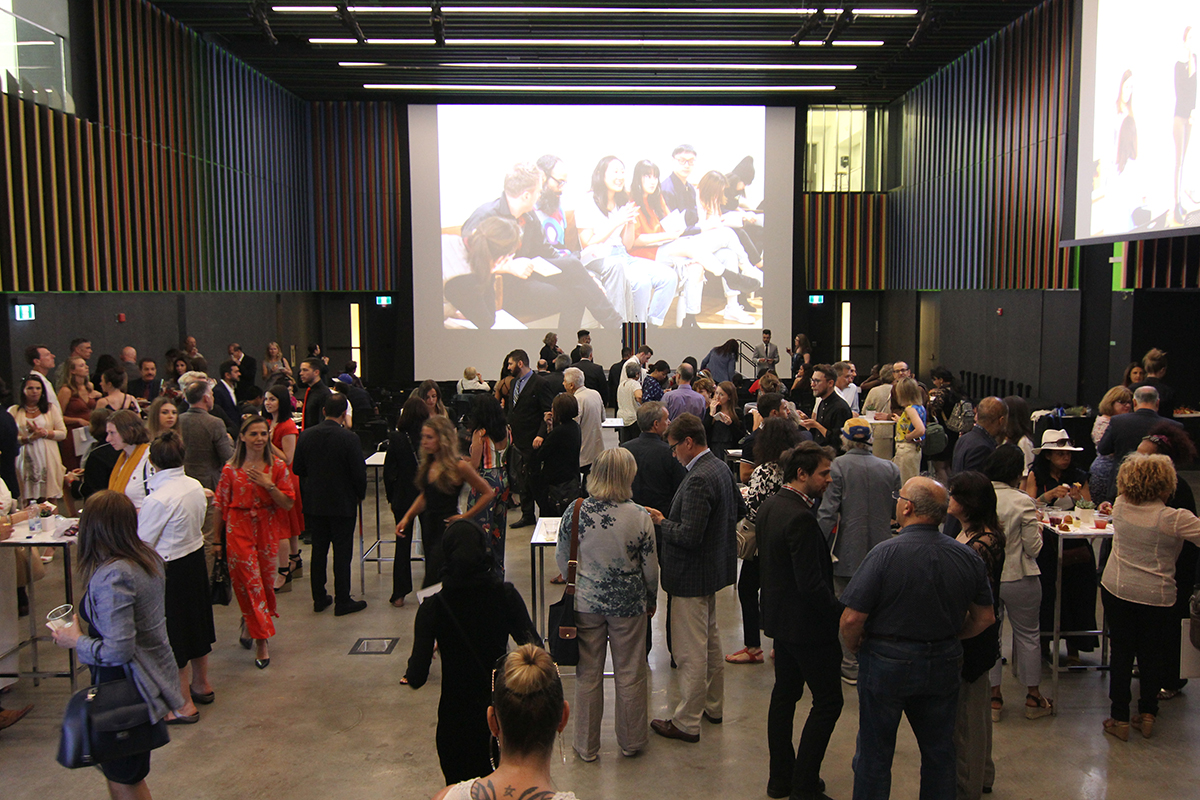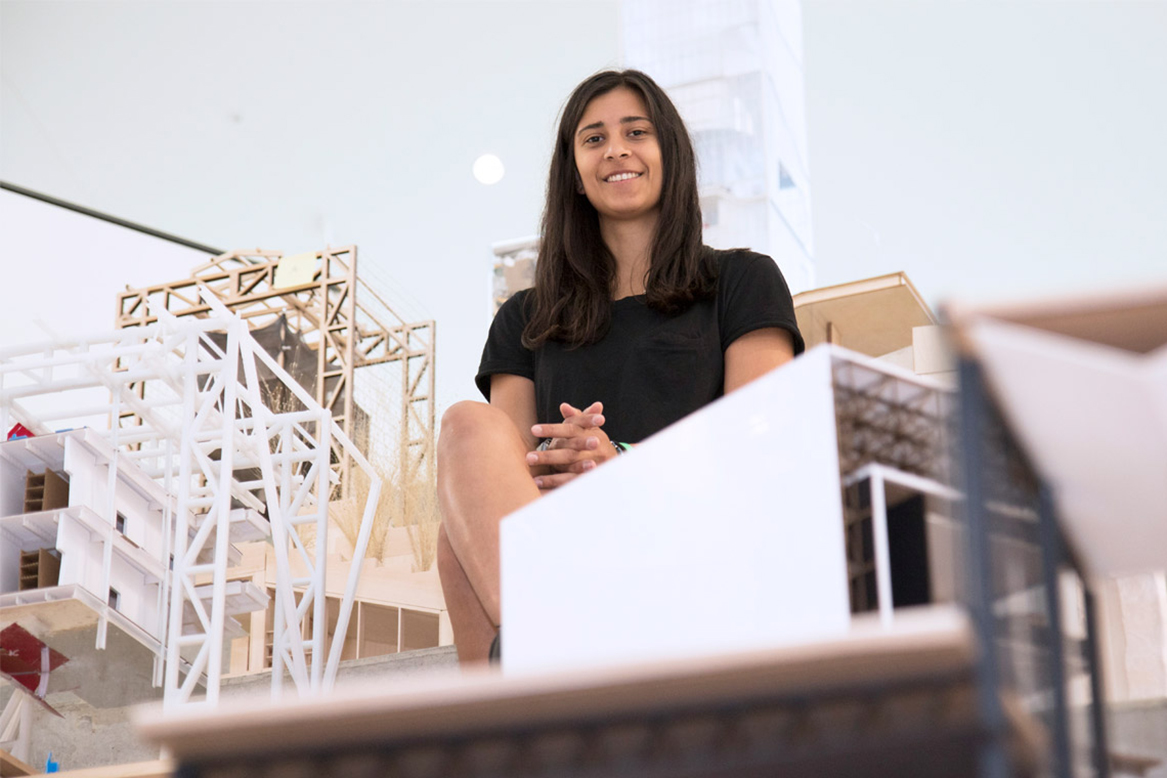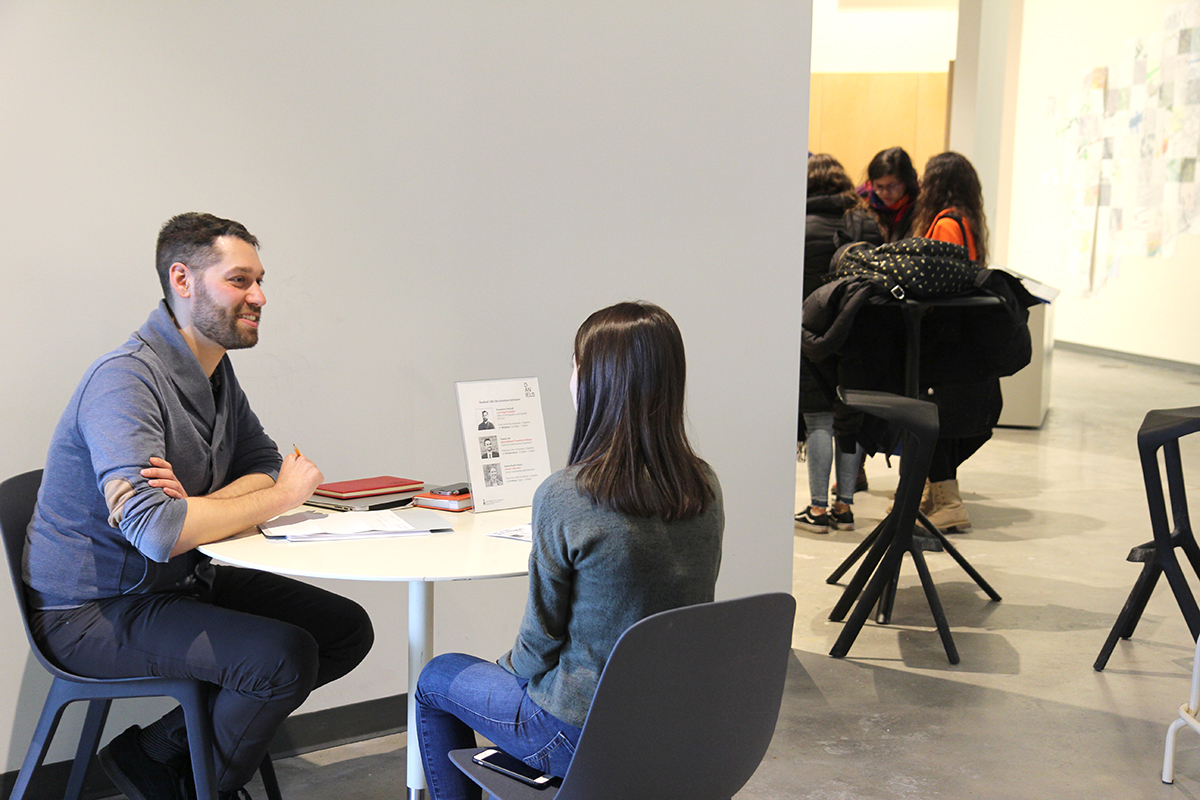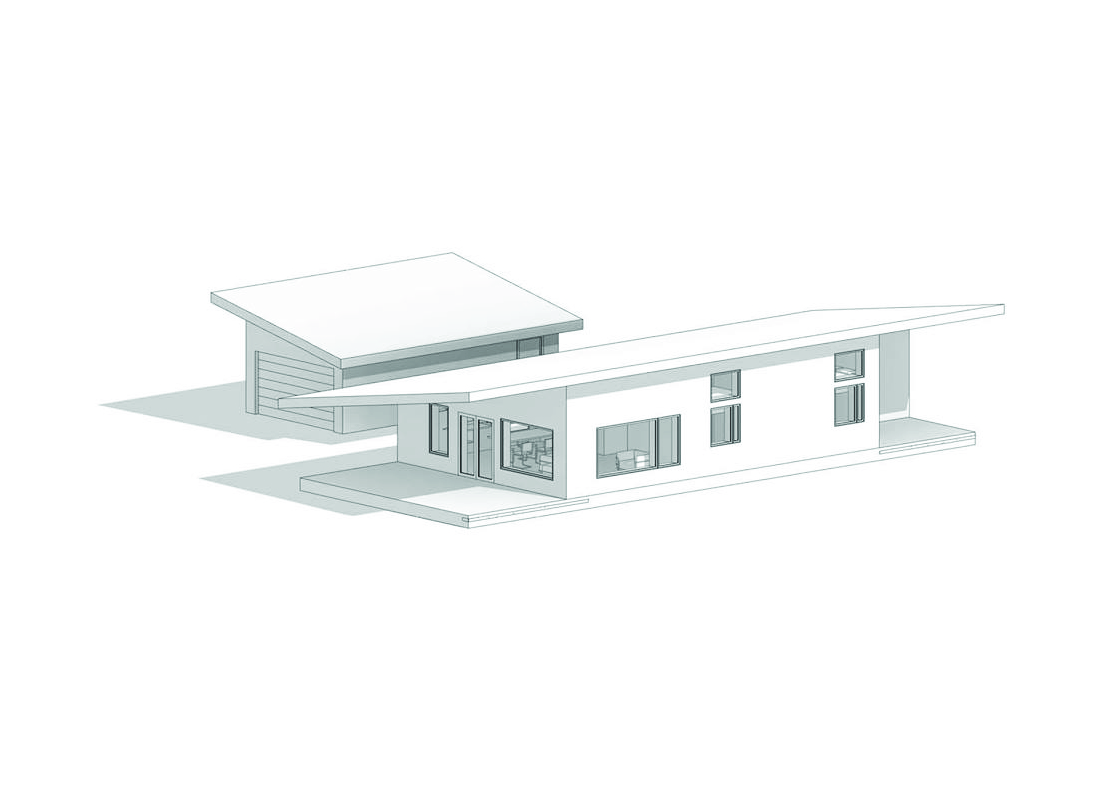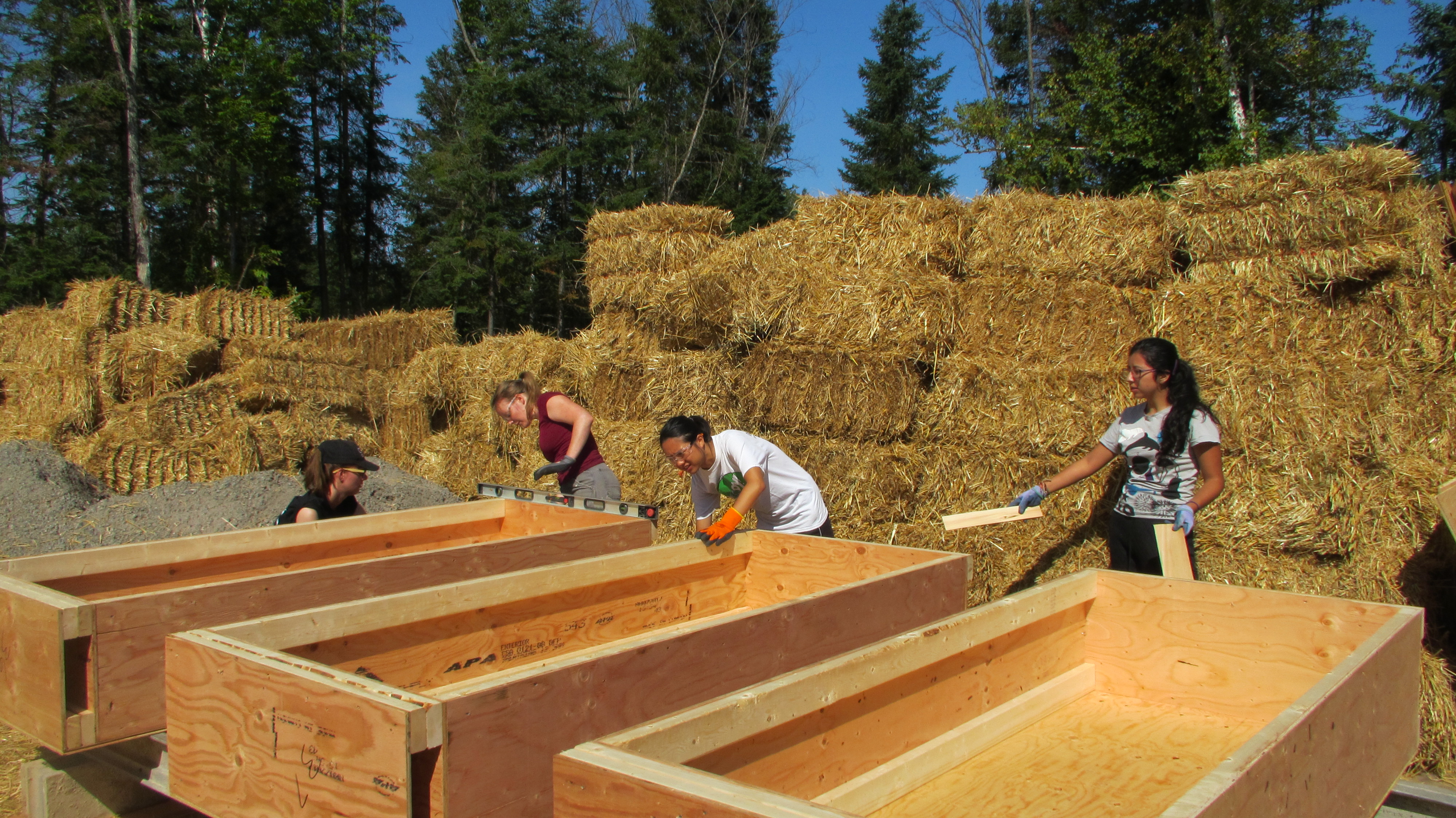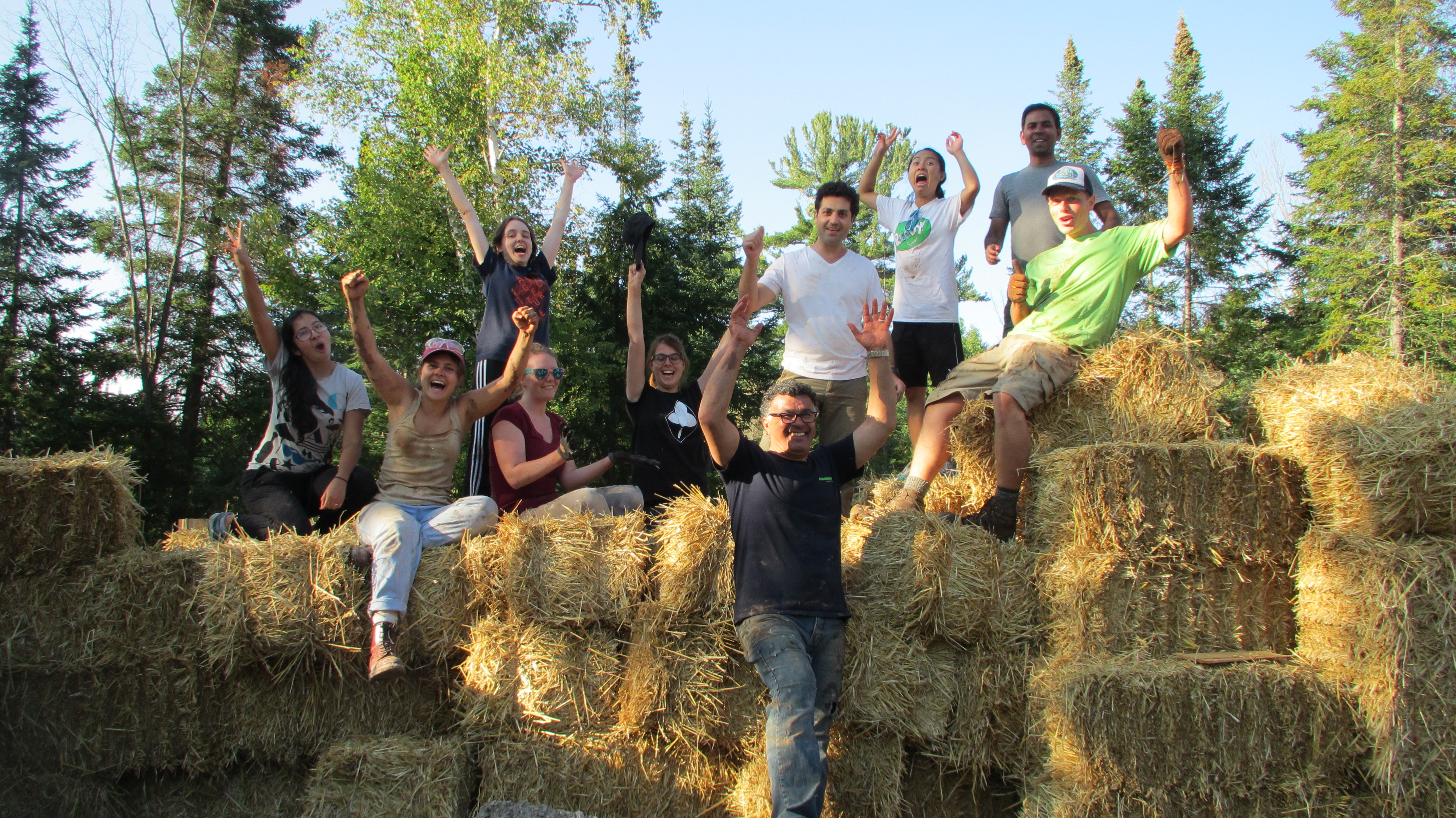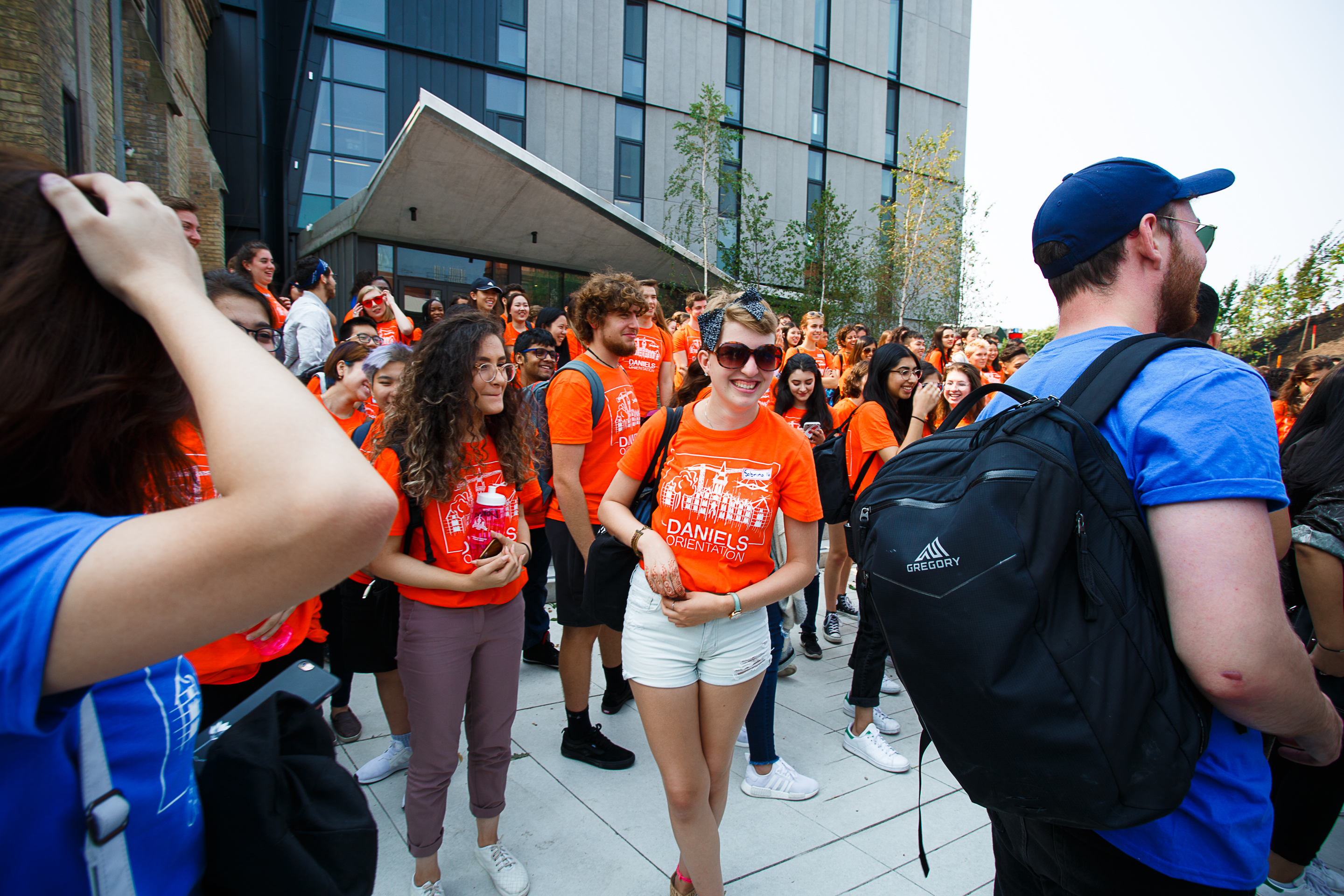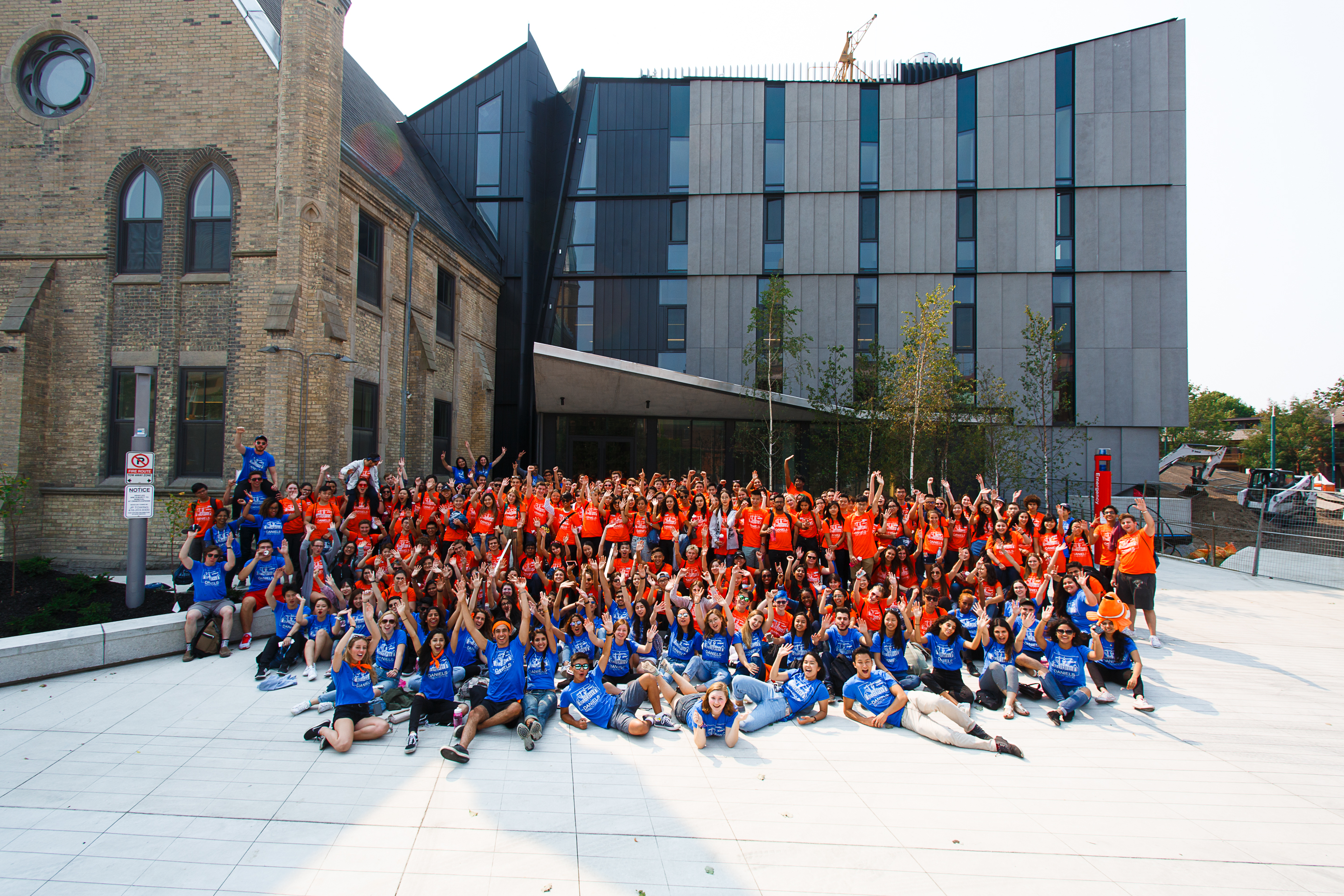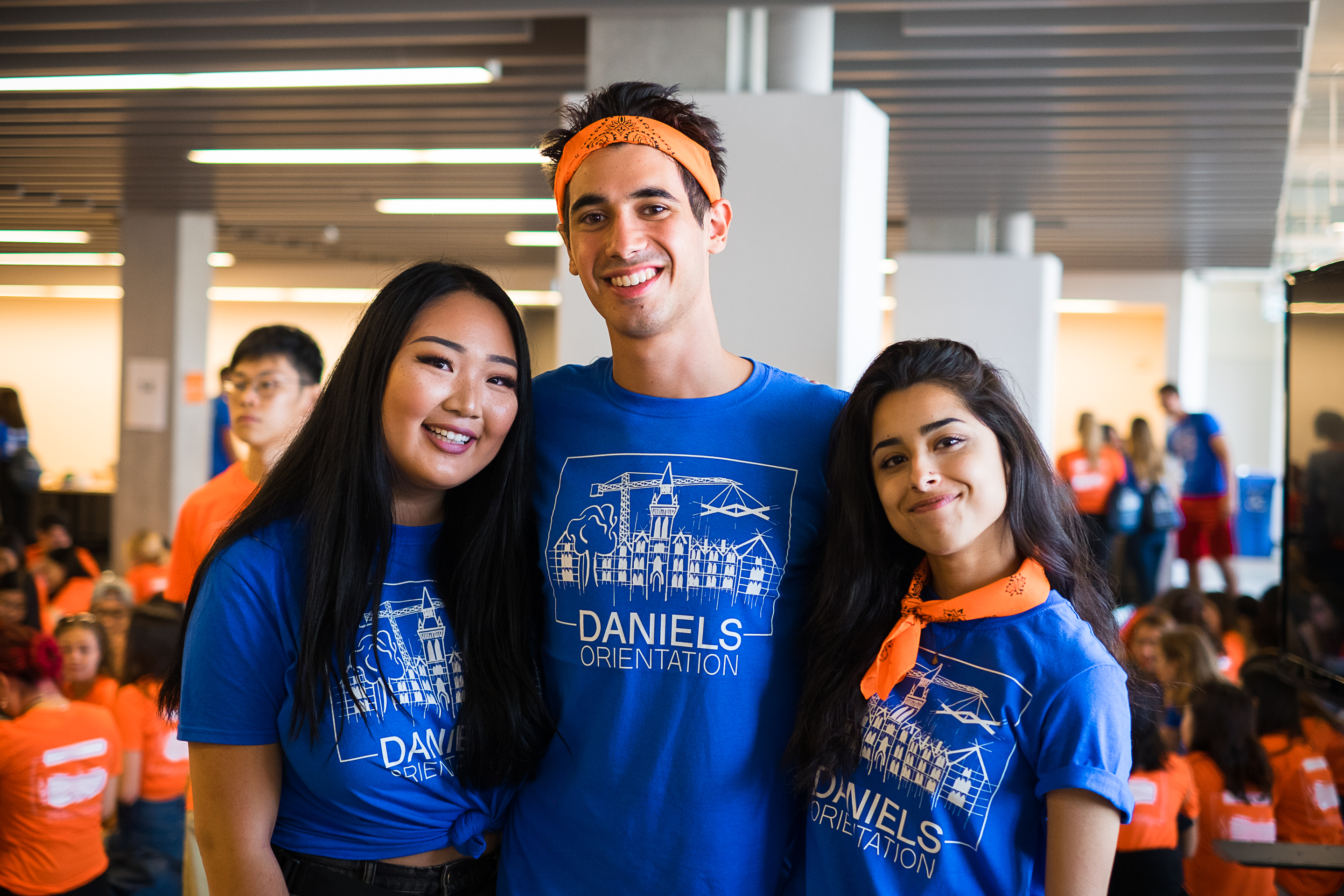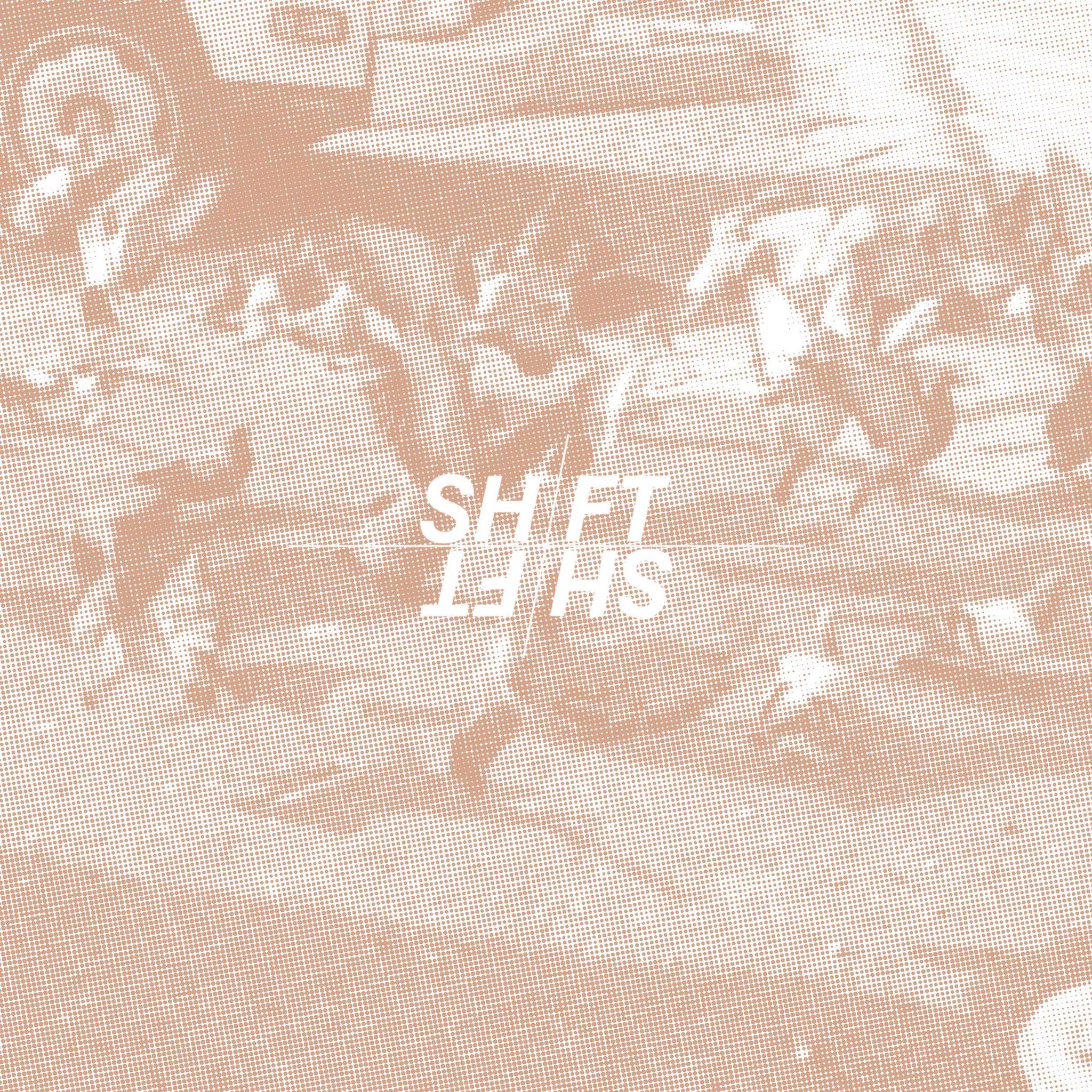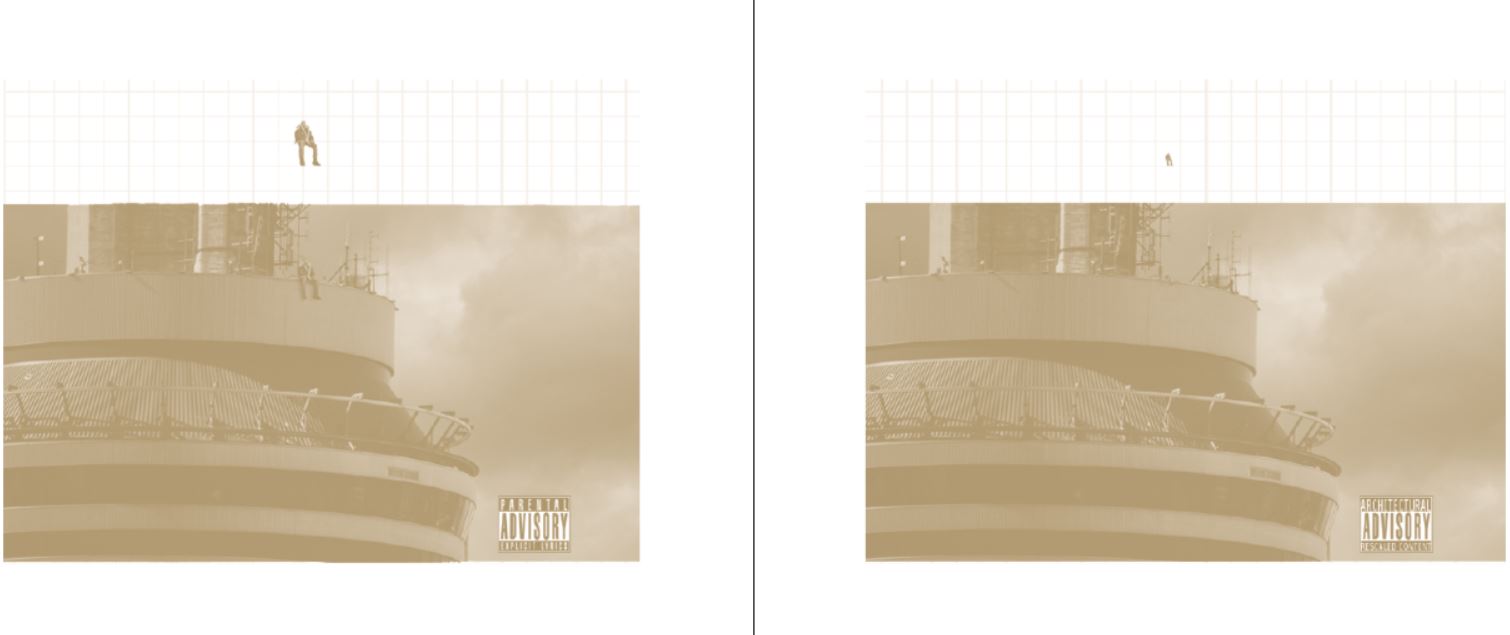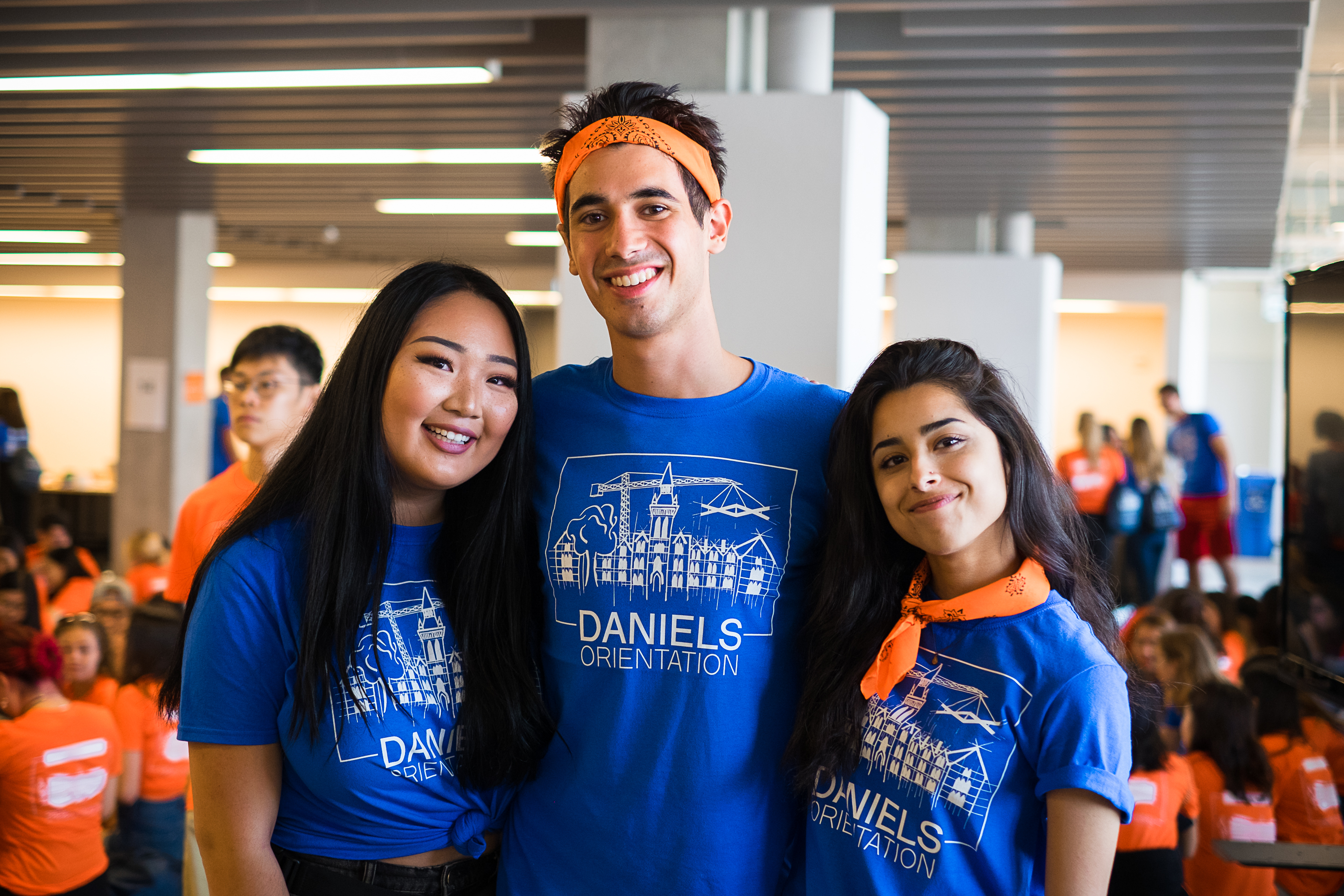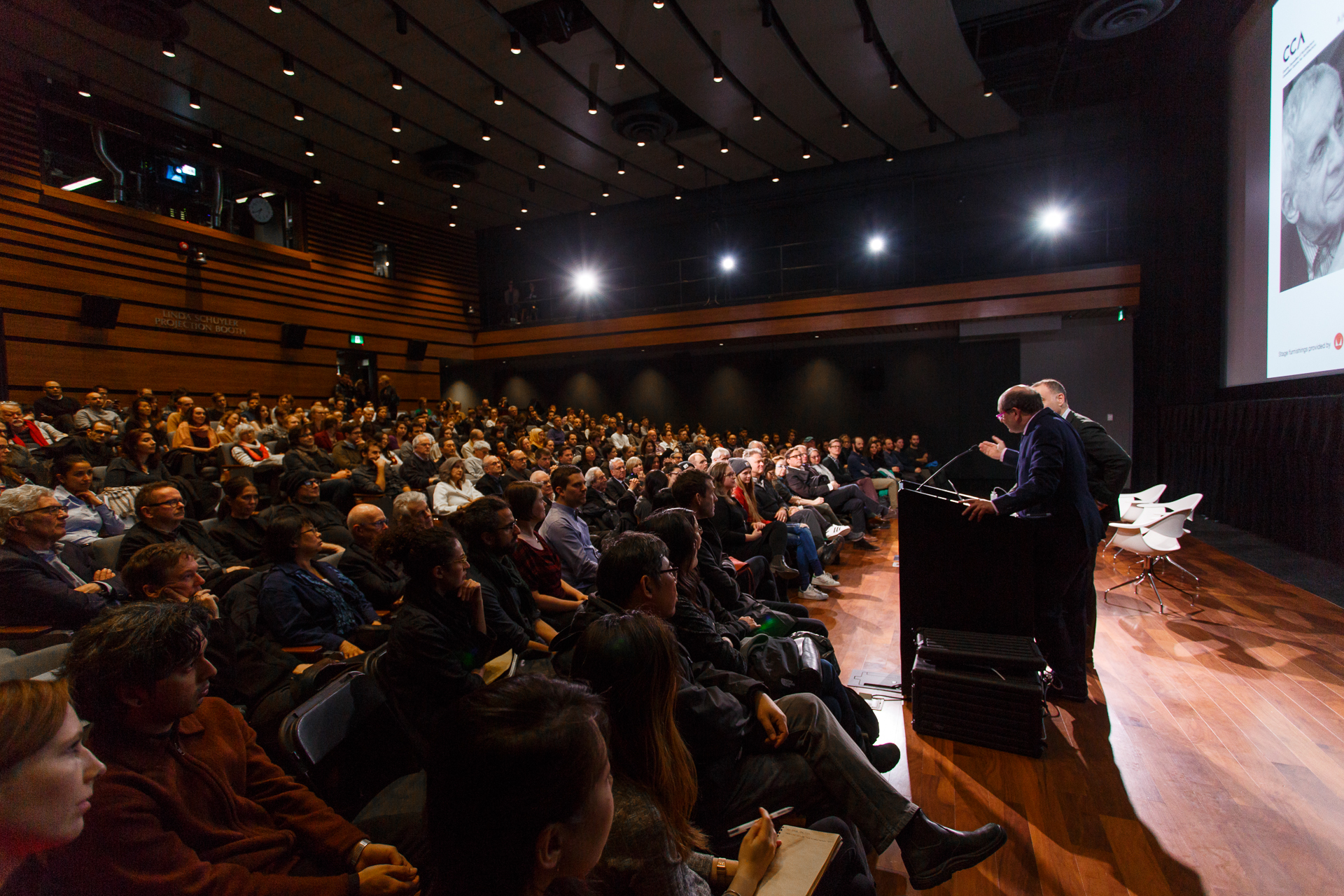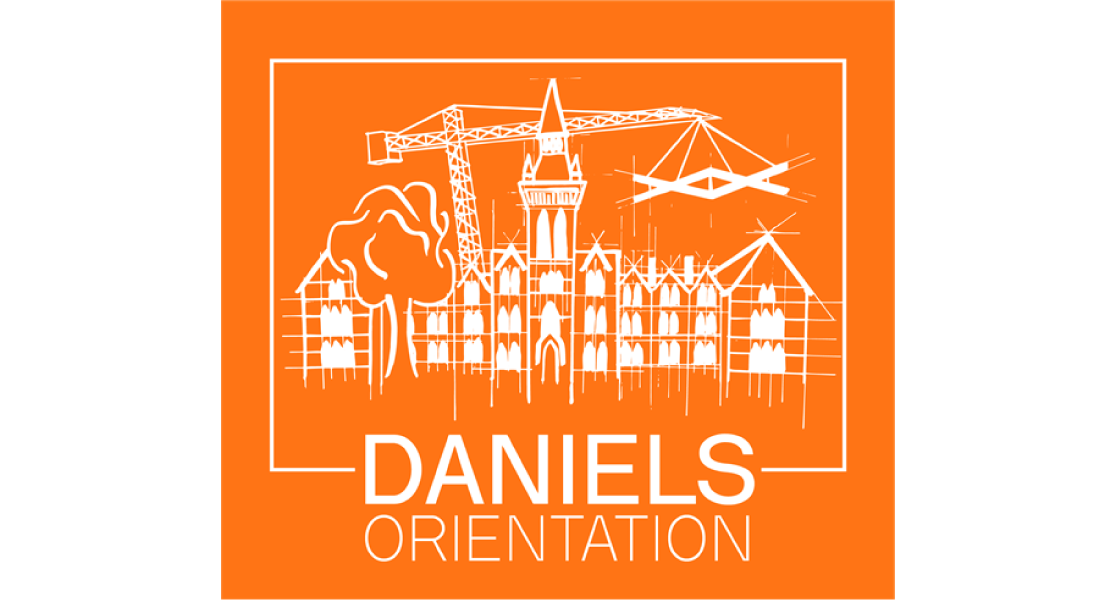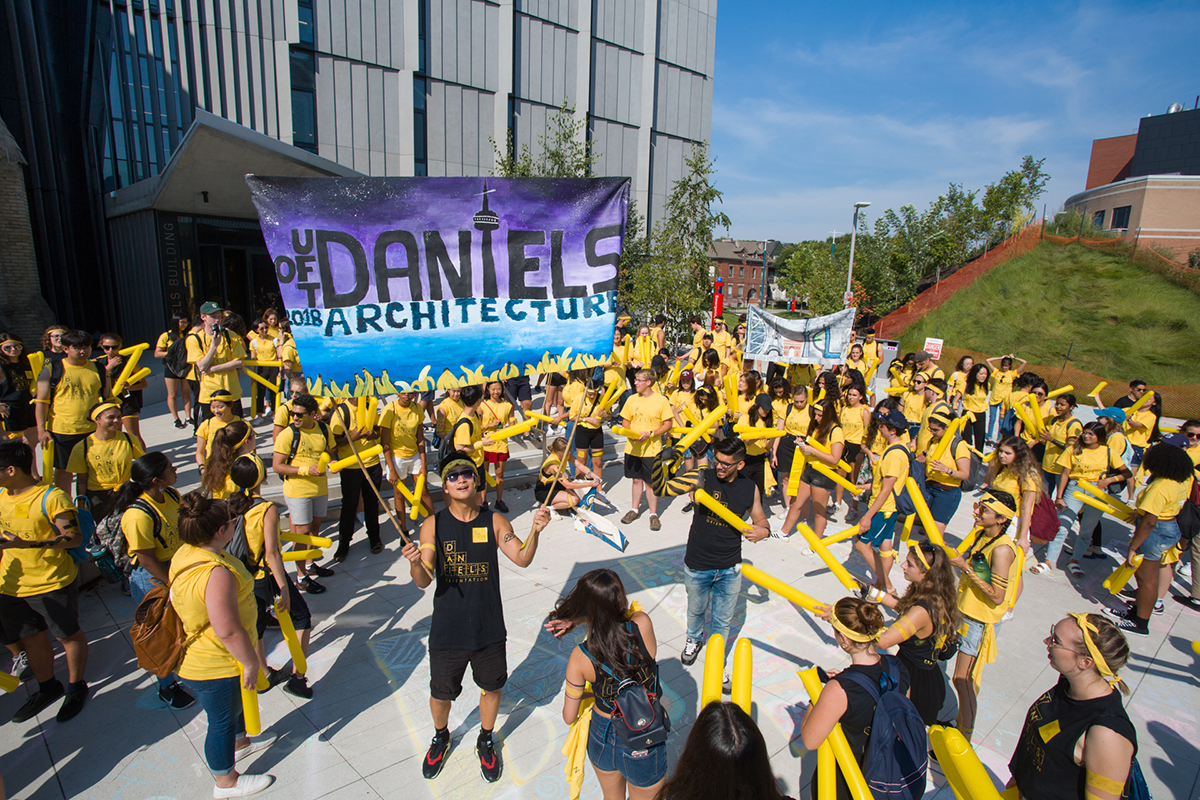
12.09.18 - 9 tips for new students starting a degree in architecture, landscape architecture, art, or urban design
Whether you're kicking off an undergraduate or graduate degree, starting a new program at a new school can be both exciting and overwhelming. Looking for tips on how to make the most of your time as a design student? We surveyed some of our 2018 graduates for advice.
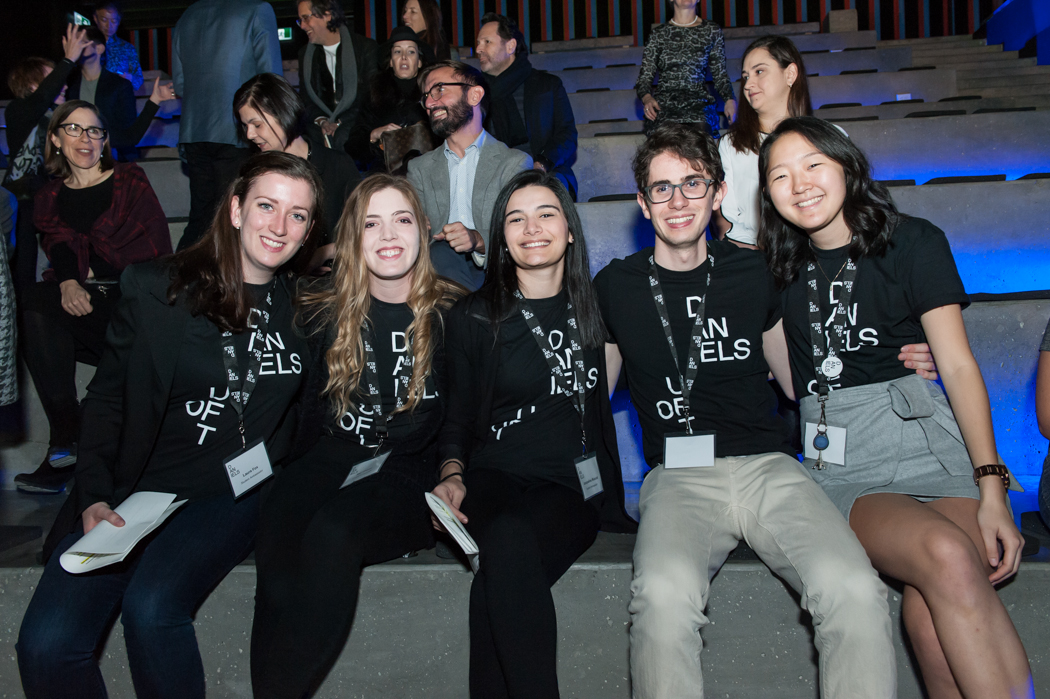
Student volunteers at the opening of the Daniels Building, Nov. 17, 2017
“Architecture may be your start goal, but it may not (and probably won't) be your end goal. What I mean is that architecture is a room with many doors (pun intended), and all those doors can take you in so many directions in the world of design. As my classmates and I graduate, I see more and more of them interested in pursuing other fields, such as video game design, set design, graphic design, furniture and lighting design, urban design, and the list goes on. My advice for prospective students would be to stay open minded, you might just fall in love with something else along the way.
“Stay involved, and take advantage of all the events / clubs / organizations that are available to you (most of them offer free food!). The most memorable moments don't happen in the classroom, they happen unexpectedly in the studio late-night, at Orientation Week or an AVSSU event, or games night with your arch/vis friends.” — Shalice Coutu, HBA, Architectural Studies and Psychology
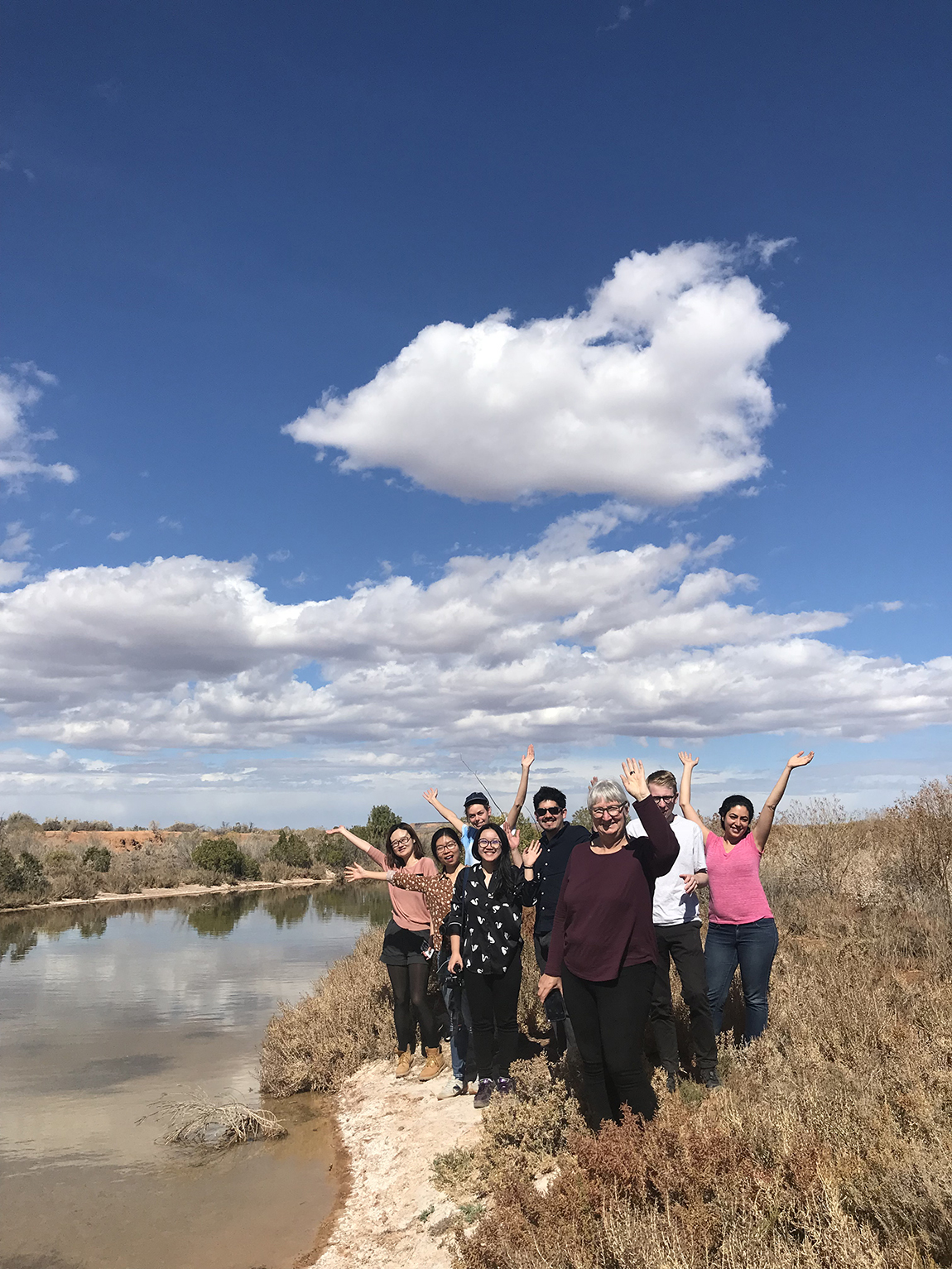
Students Xiaoting Stephanie Yuan, Yueyi Li, Nicholas Callies, Luis Quezada, and Chenxuan Meng joined Associate Professor Aziza Chaouni in Australia this summer via the Designing Ecological Tourism research platform.
“Don't miss any chance to travel as much as possible before and during school. It is okay to miss a semester or a year before you finish your degree if you get to work and/or travel through Europe, Latin America, Africa, Australia or Asia.” — Herman Borrego, MArch
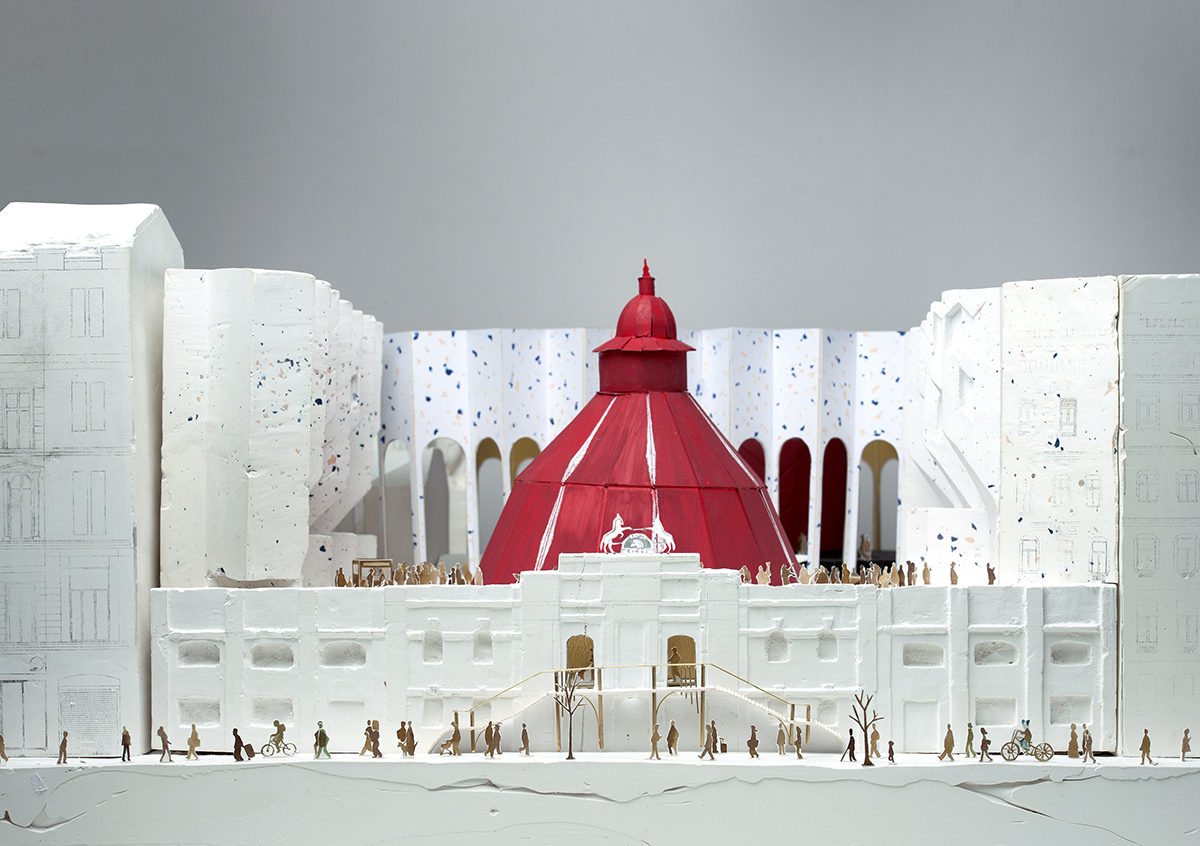
Lecturer Adrian Phiffer received the Incentive Award in the Riga Circus Competition. A team of third year Master of Architecture students — including Angela Cho, Matthew Leander, Mariano Martellacci, and Avi Odenheinmer — also contributed to the winning submission.
“University of Toronto is a big fruit; don’t be scared to take a bite! It is a great institution with many means and capacities to support good ideas and projects, do not be shy to apply to grants, awards, working positions, and ask for funding. While being a university student, you are in the best spot to initiate projects and gain meaningful experience that will propel you to where you want to be in the future.” — Sebastian Beauregard, MArch
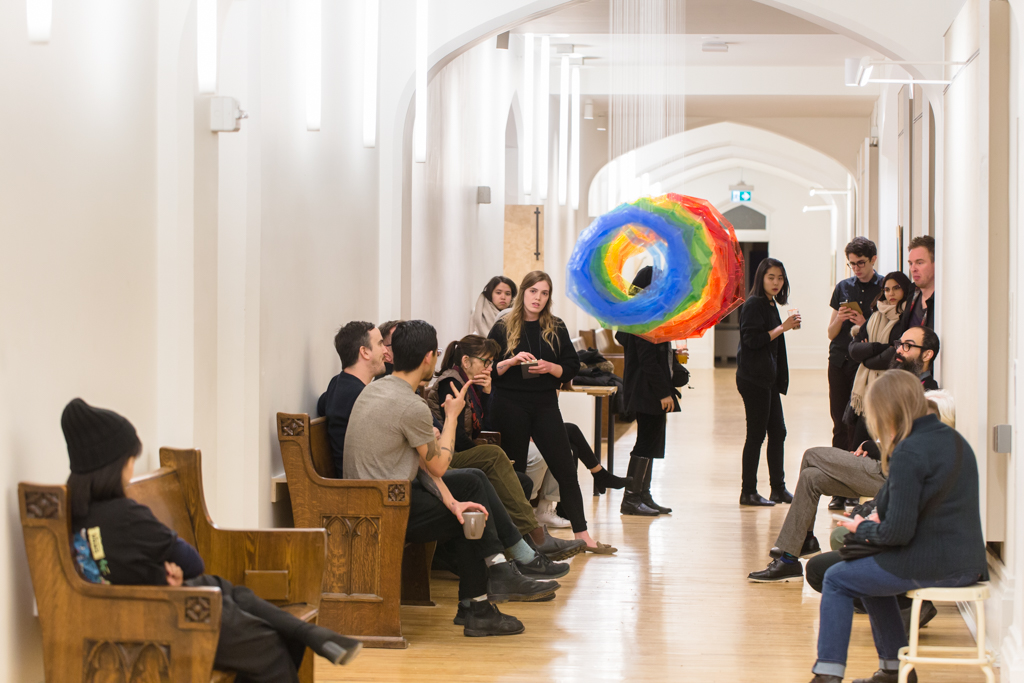
“One thing I wish I could change in my university experience is that I wish I started spending time in studio earlier. At Daniels we constantly exposed to such great and inspiring artists and designers that at the end of the day it really motivates you to become a better artist. My only advice to new students is to spend more time in studio and become a part of the studio culture, you will definitely benefit from it!” — Sky Ece Ulusoy, HBA, Visual Studies and Architectural Studies
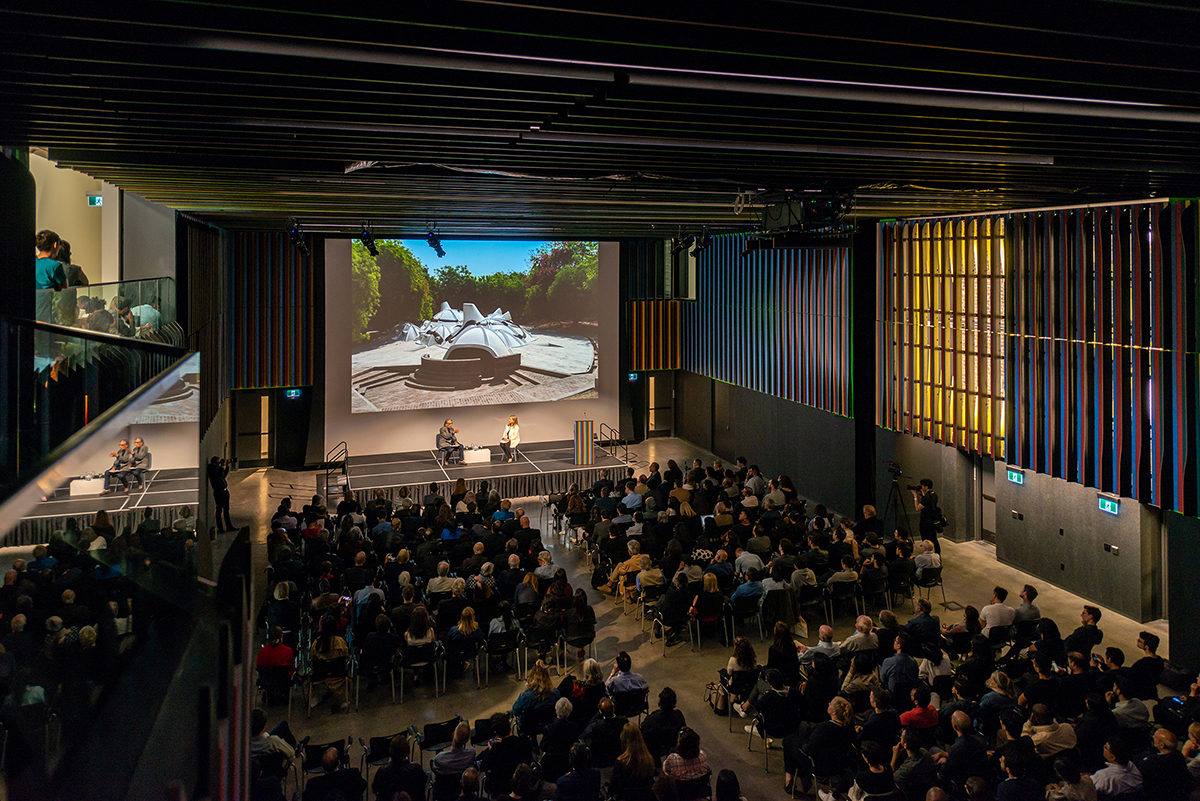
The Daniels Faculty has a rigorous public lecture series that brings in leading professionals, academics and scholars from around the world. Last year, we hosted the Pritzker Architecture Prize Laureate Lecture, with Balkrishna Doshi (pictured above).
“I would encourage new students to approach their studies with an eagerness to learn and an open mind to take advantage of every experience studying at Daniels will offer. There is something very inspiring about learning and exploring in an environment with peers and instructors with similar interests and goals. The opportunity to grow as a professional is limitless.” — Christina Poulos, MArch
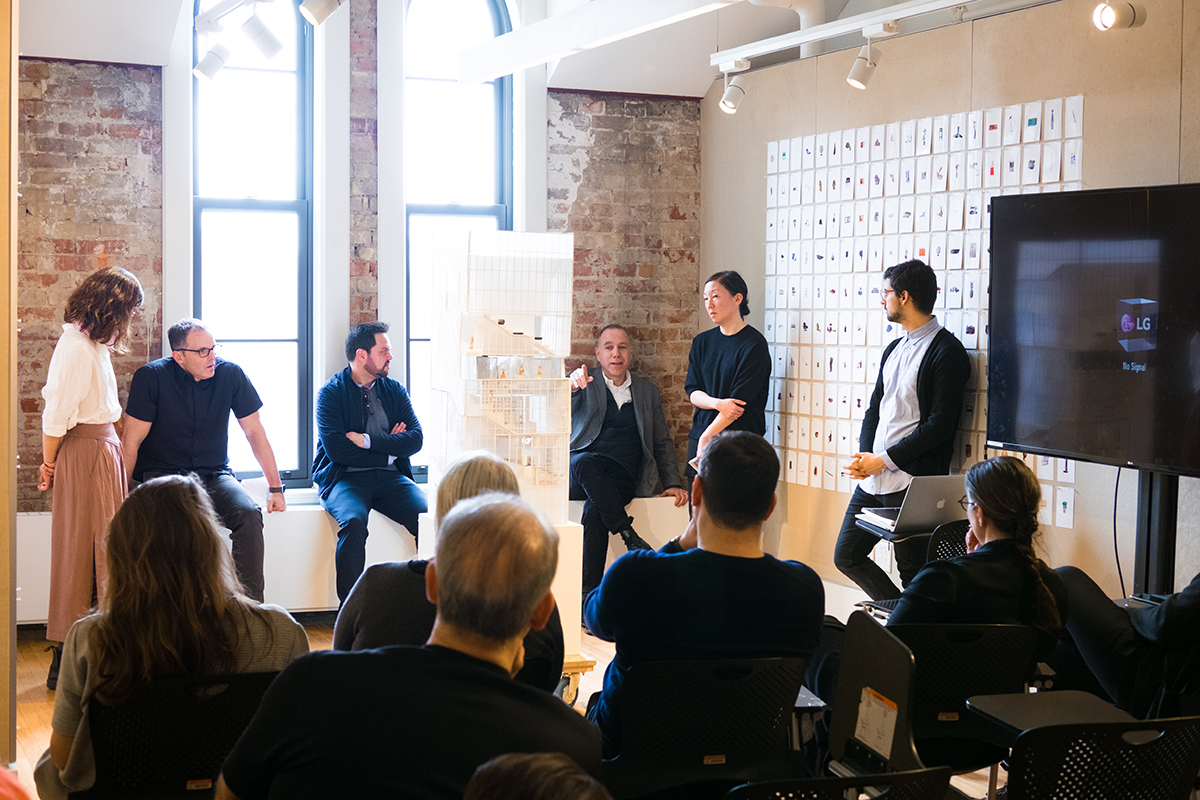
Stacey's thesis project explored the vast areas of urban landscapes that are highly maintained, mowed, and managed, including vast tracks of hydro corridors. "I envision cities as epicentres of biodiversity, connectivity, and resilient natural systems," says Stacey. Read a Q&A with Stacey here.
"Make every project your own. There is always a way to bring your interests to the forefront.” — Stacey Zonneveld, MLA
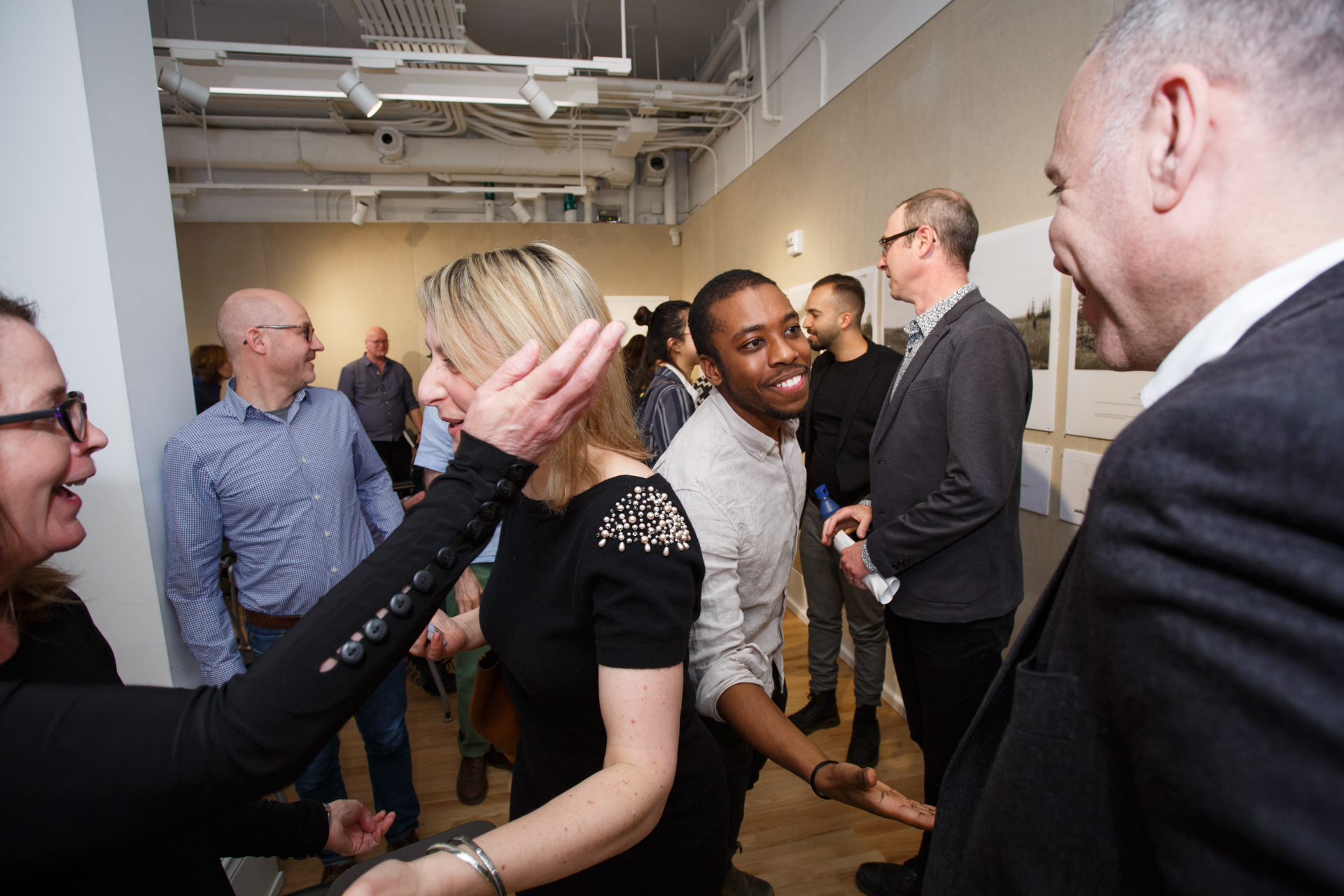
"Take advantage of the network of professionals you are exposed to at Daniels. Whether as mentors, instructors, or future employers, they represent a wide range of interests within the field and serve as an amazing resource during your studies and as you begin your career.” — Matthew Mckenna, MArch
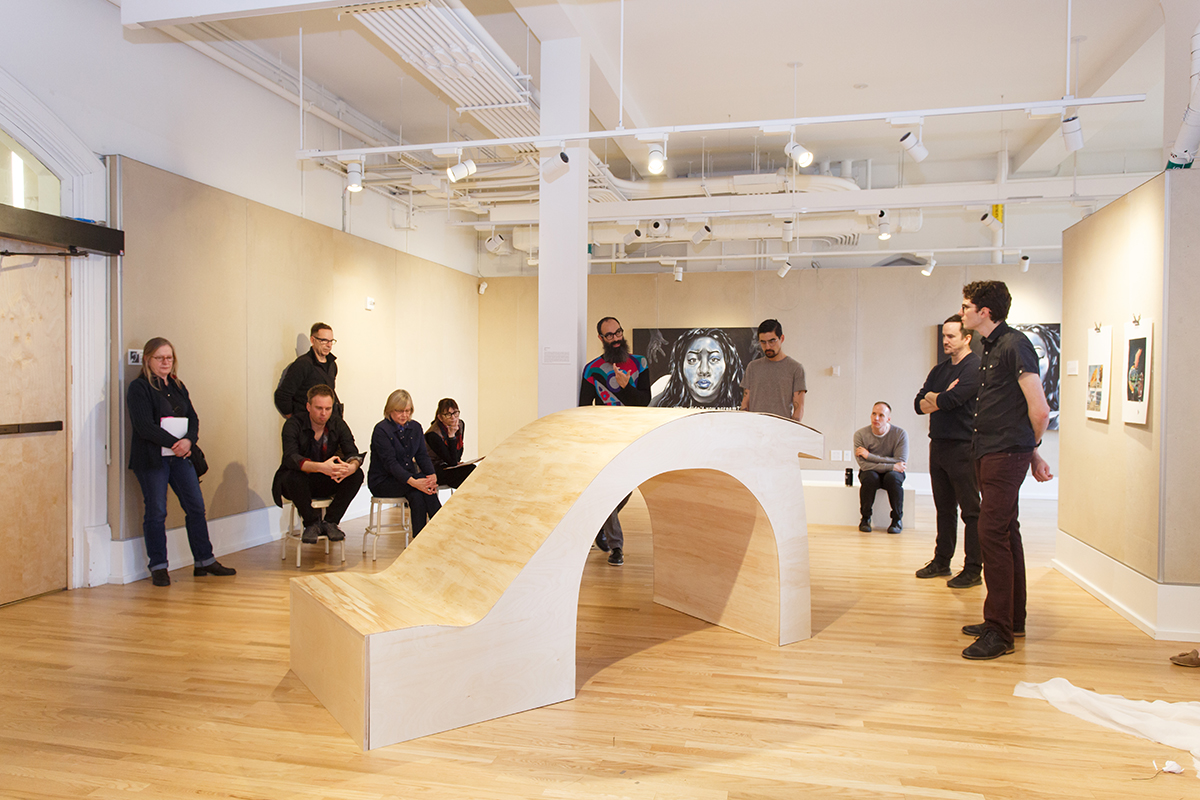
“Consider all of your courses as one giant course. Although every student has different subjects that they study (or different classes within architecture), avoid artificially soloing them: each can bring something new and unique to another, and taken as a whole your education will be far more fulfilling than if they are kept in isolation. Always be thinking about how you can use what you've learned in one class to influence your work in another!” — Robert Raynor, HBA, Architectural Studies and Visual Studies
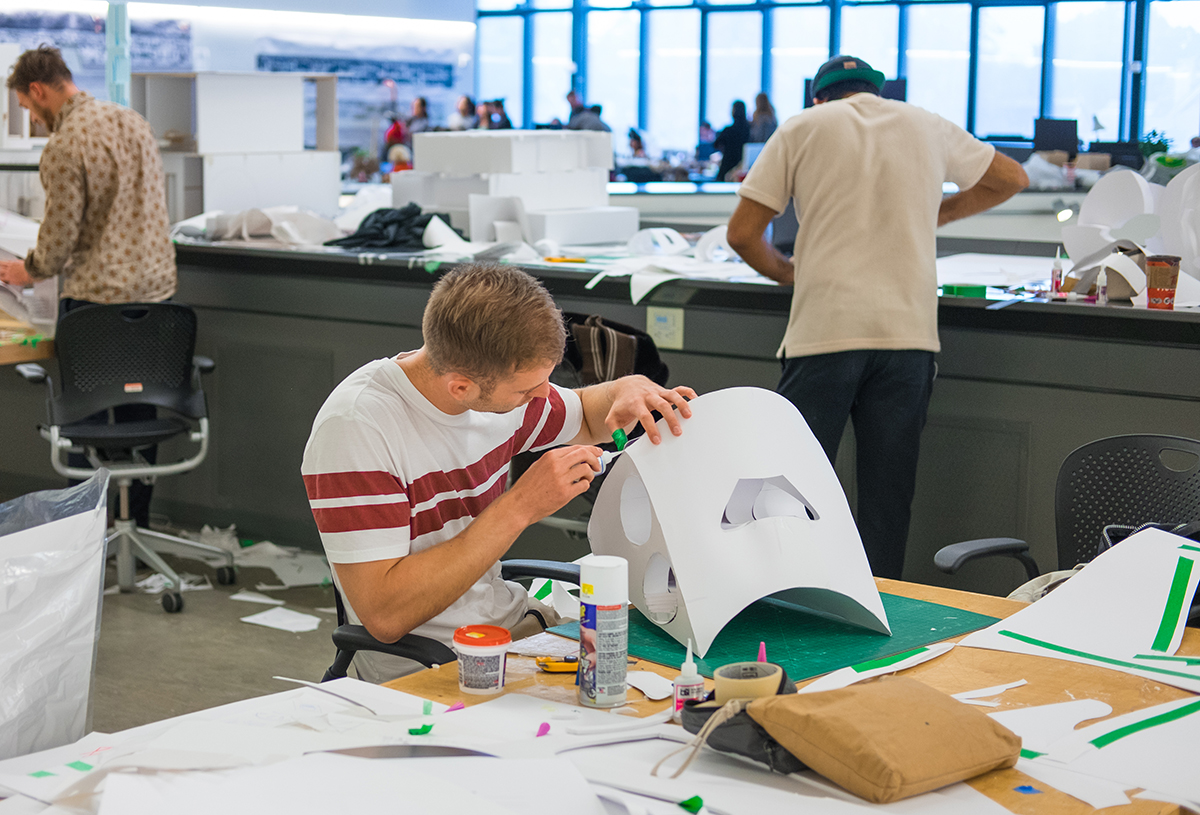
“I would encourage students to make a mess. Design schools are places where people of similar interests come together to exchange ideas; they are spaces of testing and making, of using experience and gaining experience. To make the most of your degree, give yourself the freedom to experiment, to play around, to make a mess, to fail, to wander and to grow.” — Farah Michel, HBA, Architectural Studies and Italian
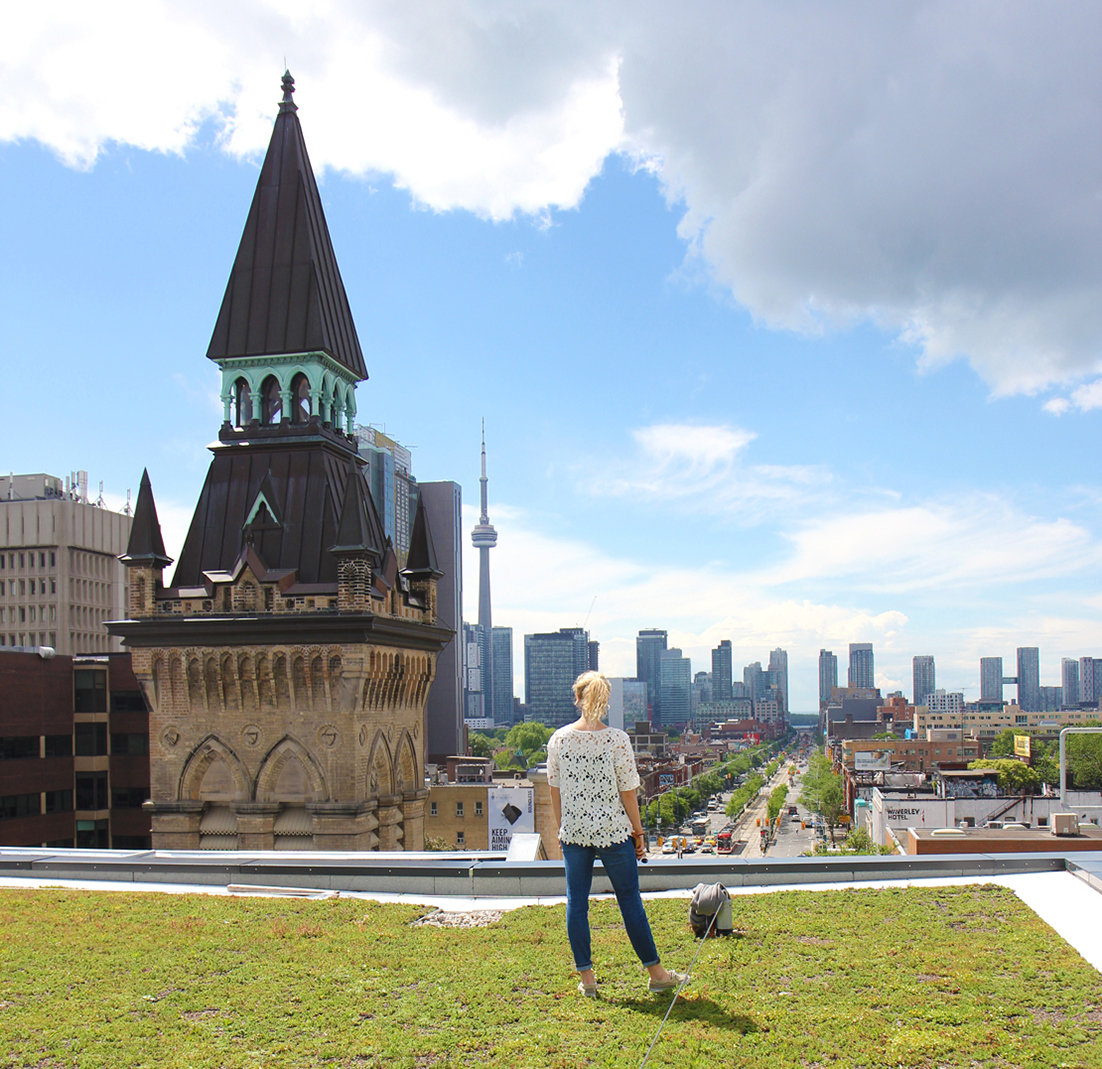
Read our Q&A with Catherine Howell and Hadi El-Shayeb, student lab managers & research assistants at the Green Roof Innovation Testing Laboratory (GRIT Lab) in the summer of 2017.
“I have learned more skills in this program than I ever thought possible. I was disillusioned with school after my undergrad; this program reinstated my love of learning and pushed me to create work that I am proud of and can actually see, as opposed to an essay or test. If you are both creative and technically‐minded I would wholeheartedly recommend this program to you, it will change the way you view the world and give you a clear, exciting career path.” — Catherine Howell, MLA


